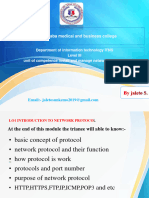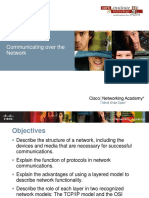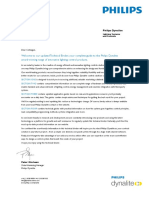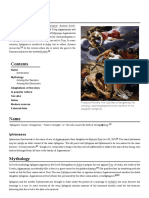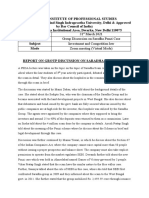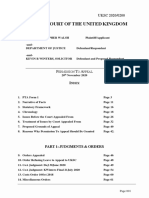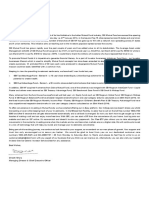Chapter 3: Protocols and Standards
1. What is a Protocol?
A protocol is a set of rules that governs data communication. The key elements of a protocol
are:
● • Protocols define the rules for communication between two or more devices.
● • They specify how data is formatted, transmitted, and processed.
● • They include conventions for data representation, signaling, authentication, and error
detection.
● • Without protocols, devices would be unable to communicate efficiently or correctly.
● • Protocols manage the process of establishing, maintaining, and terminating a
communication session.
● • They define how and when data should be sent and received.
● • They ensure data integrity, reliability, and delivery confirmation.
● • Protocols control flow and error handling during communication.
● • Protocols may be proprietary (developed by companies) or standardized (by
organizations like IEEE, ISO).
● • Examples: HTTP, TCP/IP, FTP, SMTP, DHCP, DNS.
2. Key Elements of a Protocol
● • Syntax: Structure and format of data (e.g., data length, order, encoding).
● • Semantics: Meaning of each section of bits (e.g., control information, error correction).
● • Timing: When data should be sent and how fast (e.g., flow control and synchronization).
● • Error Detection: Rules for identifying errors in data transmission.
● • Acknowledgment: Rules for confirming successful receipt of data.
● • Retransmission Strategy: Rules for resending data if errors are detected.
● • Addressing: Ensures data reaches the correct destination.
● • Sequencing: Arranges data packets in the correct order.
● • Flow Control: Manages the rate of data transmission.
● • Encryption: Secures communication using encryption protocols like SSL/TLS.
3. What is a Standard?
● • A standard is an agreed-upon set of rules or norms developed by organizations.
● • Standards ensure interoperability between hardware and software developed by different
vendors.
�● • They facilitate smooth communication and device compatibility.
● • They help avoid proprietary limitations and ensure universal adoption.
● • Standards promote quality, reliability, and consistency.
● • Examples: IEEE 802.3 (Ethernet), IEEE 802.11 (Wi-Fi), ISO/OSI Model.
● • They are reviewed and updated periodically to keep up with technological advancements.
● • Standards are critical in product development and manufacturing.
● • They can be mandatory or voluntary depending on the industry and region.
● • Common standard organizations: ISO, IEEE, ANSI, ITU-T, IETF.
4. Importance of Protocols and Standards
● • Enable communication between different types of hardware and software.
● • Ensure reliability and accuracy of data transmission.
● • Prevent data collisions and manage network congestion.
● • Standardize behavior across devices to reduce complexity.
● • Enhance security and privacy through structured communication protocols.
● • Promote global interoperability between manufacturers and service providers.
● • Improve network performance and scalability.
● • Ensure compatibility across future technology upgrades.
● • Support international trade and product development.
● • Facilitate education, training, and certification in IT and networking.
5. Real-World Analogy for Protocols and Standards
● • Imagine people from different countries communicating using a common language
(protocol).
● • The grammar rules they follow ensure clarity (standards).
● • Protocols are like road traffic rules – everyone follows them to avoid accidents.
● • Standardized electrical plugs ensure you can charge your phone anywhere globally.
● • Using different protocols without a standard is like two people speaking different
languages.
● • Protocols and standards act like mutual agreements in a conversation.
● • They help set expectations in digital communication.
● • Without standards, each device would need custom configurations to work.
● • Similar to the way postal systems have formats for addresses and stamps.
● • Standard time zones help people around the world coordinate – similar to timing in
protocols.







